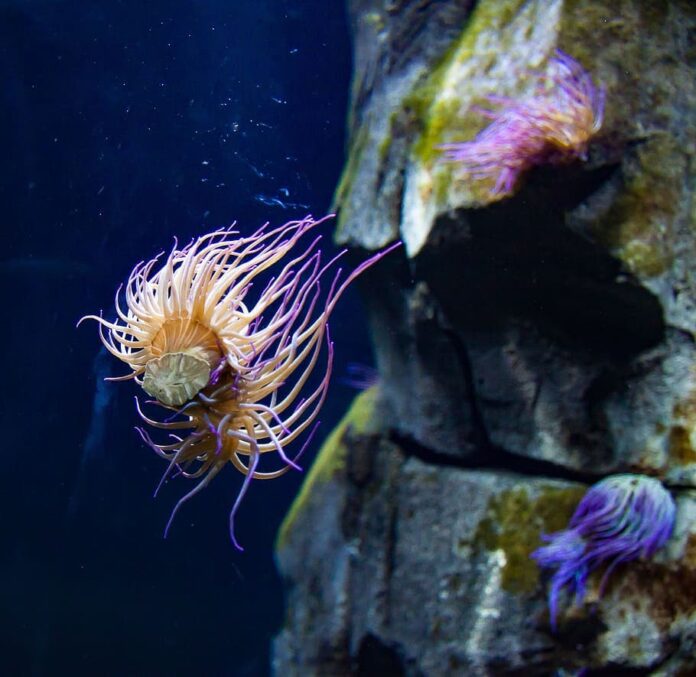Anemone is a close relative to coral and jellyfish, and it got its name after a flowering plant due to its appearance. The first thing that you should know is that sea anemones are not plants, they are invertebrates. What we focus on today are some weird-looking anemones that are so out of this world. Don’t forget to share your thoughts on which one you find looking the weirdest.
1Antler Anemone
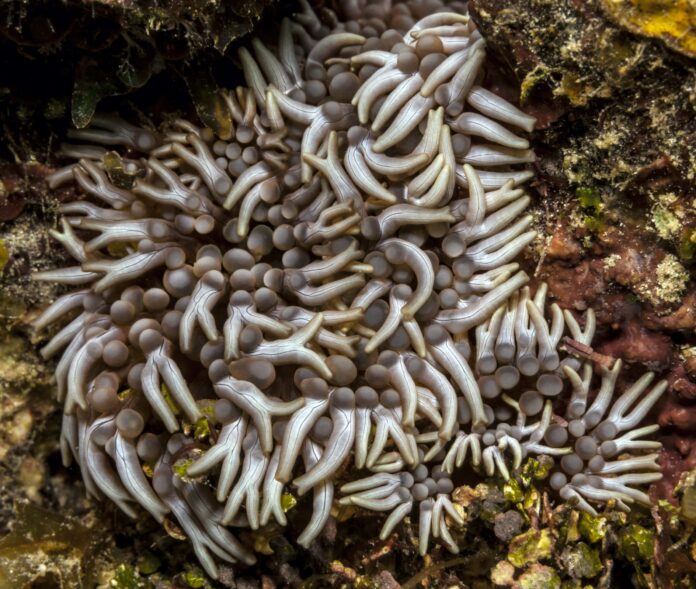
The antler anemone also goes by the name Caribbean branching anemone, hidden sea anemone, and stinging anemone. It can grow to 20 centimeters in length, but some can be as long as 50 centimeters. Antler anemones vary in colors such as brown, green, pink, or purple. They have a basal or pedal disc that helps them crawl and dig into place. What you see are not tentacles, they are pseudotentacles that grow up from the rim of the oral disc.
The pseudo-tentacles have some shade of pale or darker brown with densely branched tips.
This anemone is solitary and it is found among rubble and sandy areas of coral and rocky reefs. It is widespread in the Caribbean and Western Atlantic oceans, living as deep as 60 meters. An antler anemone extends its tentacles at night when it feeds on plankton. Besides planktons, antler anemones also feed on anything that is caught in their stinging tentacles such as fish and so on. Those tentacles contain nematocysts that are powerful enough to sting a human.
2Clock Face Anemone
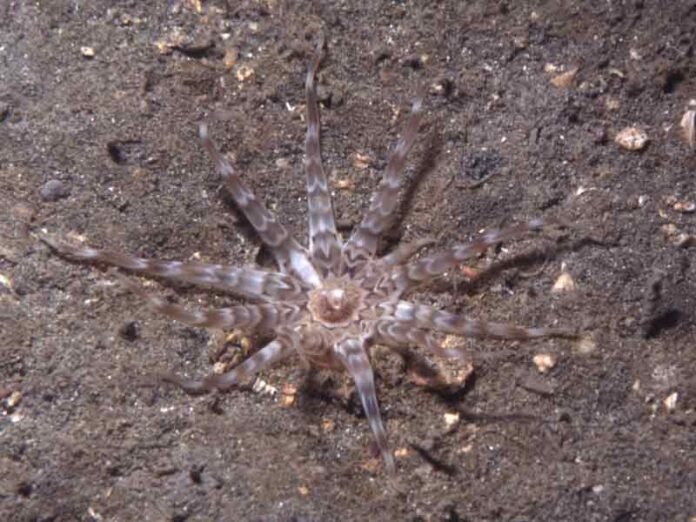
Some people’s arachnophobia strikes seeing the picture of this anemone, it resembles a spider a lot. Clock face anemone is a large sea anemone species with some special abilities. When exposed, it can retract into a spherical shape while it can extend up to 30 centimeters in its normal habitats. When extended, the lowest part of the column has a rounded base which is not adhesive to any hard structure.
Normally, it burrows itself into soft substrates and only leaves its oral disc and tentacles visible. This oral disc is surrounded by 12 tentacles that can be as long as 12 centimeters. The distribution of this weird-looking anemone is around the Atlantic coasts of Western Europe. It occurs in the sublittoral zone where it buries itself in the sand 50 meters deep between low water marks.
3Frilled Anemone

A frilled anemone has a base that is wider than the cylindrical column that is long and smooth. Its column also has a fleshy consistency with a smooth surface lubricated with mucus. Frilled anemones attach to rocks or other substrate but it does not have any suckers or warts at all. However, it has a parapet and deep grove that allows it to attach itself. As you can see, it has so many slender feathery tentacles that resemble frills; hence the name frilled anemone. Some larger ones can have as many as 1,000 tentacles. These anemones vary in colors such as brown, cream, gray, olive-green, orange, pink, red, and white.
Frilled anemones are common on the northwest coasts of Europe, from north Norway to Iceland. They adhere to boulders, manmade structures, pebbles, rocks, and shells at depths of about 150 meters deep. There are also smaller ones that inhabit the lower shore beneath overhangs, in shaded places, and under stones. Frilled anemones have stinging cells on their tentacles that contain nematocysts which they use to paralyze their prey. The prey are usually amphipods and plankton and other organisms that swim within reach of their tentacles. However, their nematocysts cannot harm humans because they cannot penetrate our thick skin. Do they have predators? Yes, nudibranchs feed on them and that is the only main predator to these anemones.
4Gem Anemone
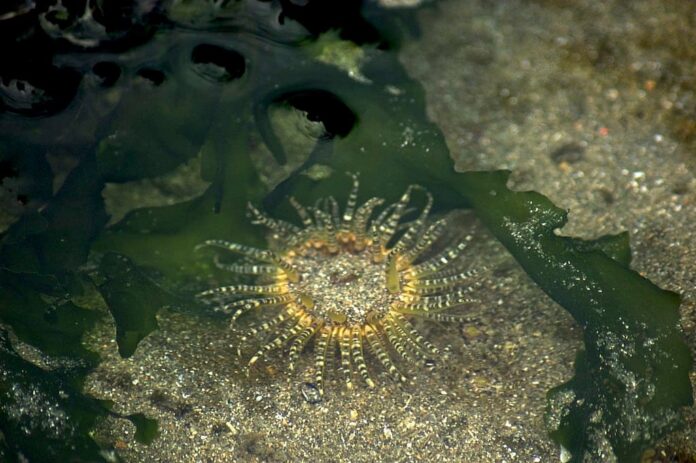
At a glance, the gem anemone looks very similar to the clock face anemone. It has a cylindrical body and a wide base that is around 2.5 centimeters. The walls of the column of the anemones are covered by wart-like tubercles known as verrucae. Above the column, there are up to 48 transparent tentacles banded in gray, olive, or pink that are arranged in 6 cycles. Its column is gray or pink with gray or white tubercles. Gem anemones are native to the Atlantic Ocean, mostly on rocky shores in areas with both calm waters and strong currents. They are also present in clefts among rocks, crevices, rock pools, and stones beneath the sand.
5Hell’s Fire Anemone
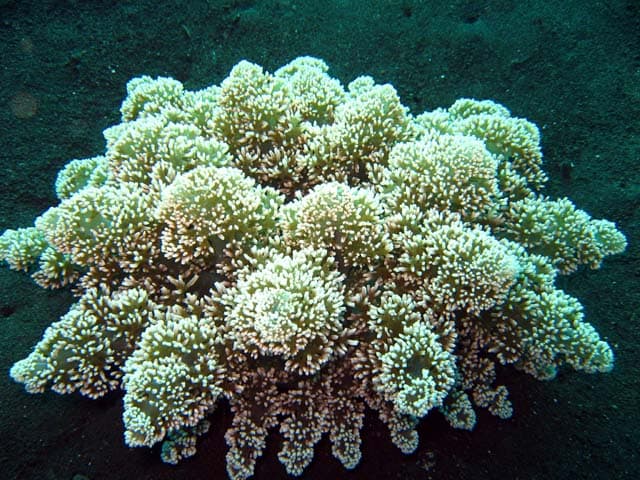
The hell’s fire anemone or tree anemone is blue, brown, cream, green, purple, or red in color. They grow at depths of 28 meters deep in the ocean where they are host to crabs or shrimps. What’s unique about this anemone is the colorless tentacles that are around 10 to 20 centimeters long. The tentacles are subdivided into branches and branchlets that make its head look like a broccoli. It got its name from its painful powerful sting that can cause severe skin ulcers due to the potent toxin. Hell’s fire anemones live singly in rubble and sandy covered bottoms on coral reefs where they burrow deep into the substrate.
6Phosphorescent Sea Pen
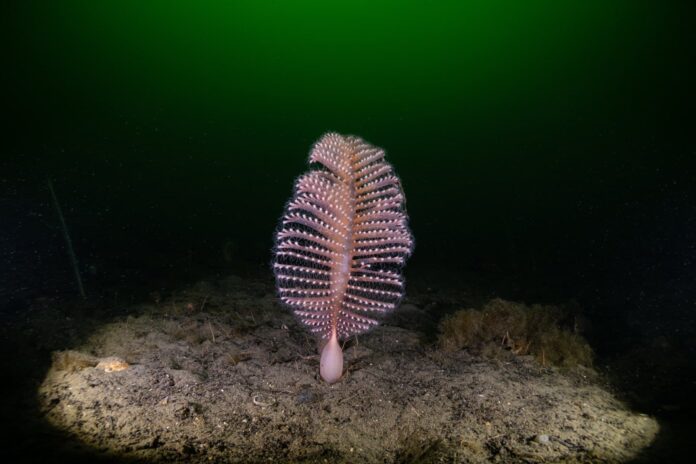
When it comes to weird-looking sea anemones, phosphorescent sea pens seem to be out of the category. However, you don’t see an animal that looks like this every day. A phosphorescent sea pen looks like an old-fashioned quill of 40 centimeters tall that is pinkish in color with white polyps. The fascinating thing is that each sea pen is a colony of mini anemone-like creatures known as polyps. As for the bottom half of the central stem, it is a burrowing organ called a peduncle. A sea pen uses the peduncle to anchor itself into the soft seabed.
Phosphorescent sea pens live in muddy and sandy bottoms from 10 to around 100 meters deep. However, they prefer deeper waters that can be up to 2,000 meters where turbulence cannot uproot them. They are filter feeders by using their 8 tentacles to catch plankton and other food particles. These sea pens can also relocate and re-anchor themselves when they to. Phosphorescent sea pens also have some predators such as nudibranchs and sea stars that feed on these anemones.
7Scarce Tube-Dwelling Sea Anemone
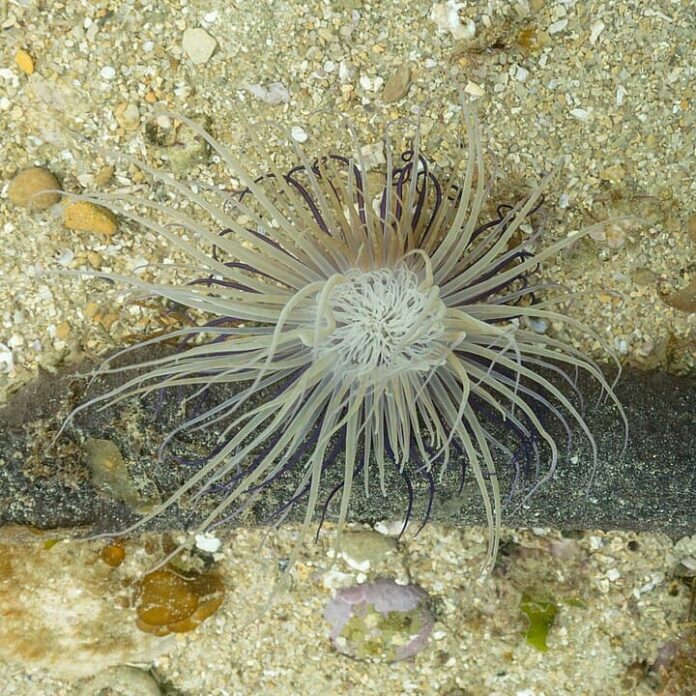
This is a large sea anemone that grows up to 20 centimeters when it fully expands itself. It lives in a tube in the seabed with 30 inner tentacles and 30 outer tentacles. A scarce tube-dwelling sea anemone is pinkish or white-gray with diffuse brown bands. These solitary anemones live in a parchment-like tube in mud, sand, or shelly mud sediment at 10 to 36 meters deep. There is very little information about this anemone species as it is only recorded in Norway and some parts of Britain and Ireland.
8Snakelocks Anemone
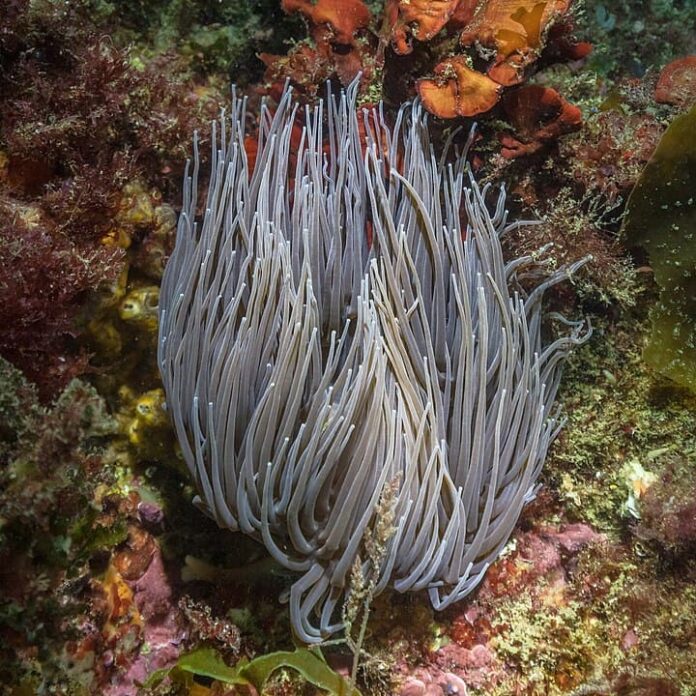
The appearance says everything about the name as all you see is the snake-like tentacles that move in the water. They have over 200 sticky tentacles that are deep green with purple tips that grow up to 15 centimeters long. Meanwhile, the diameter of the anemone is around 8 centimeters and it is gray or light brown. The coolest part is that their cells contain a special protein that makes them glow fluorescent green under ultraviolet lights.
Snakelocks anemones attach themselves to rocks on the low shore and in shallow seas at around 12 meters deep. They like to live in the sunniest spots on the shore where they extend their tentacles to enjoy the sunlight. These anemones get the energy from the photosynthetic algae and they feed on prawns, sea snails, and small fish. They capture these animals by using their long stinging tentacles. Snakelocks anemones have some relationship with several species of small animals by allowing the animals to live in them. These small aquatic animals such as incognito goby, shrimps, and Leach’s spider crab gain protection from predators thanks to their venomous tentacles.
9Strawberry Anemone
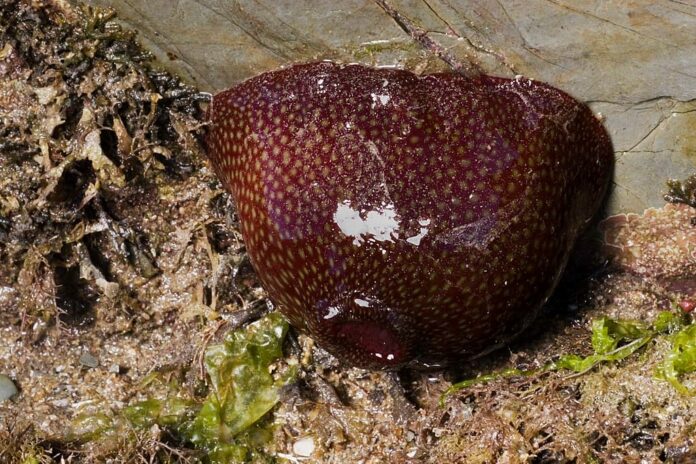
A strawberry anemone is a large anemone with a broad base that is up to 10 centimeters. The column of the anemone is red, ranging from bright scarlet to deep brownish crimson, and it is covered with small green spots. This appearance gives it a resemblance to strawberry pips, and that is how it earns its name. Along with that, it has wart-like spots that it uses to attach to gravel and stones. Strawberry anemones occur from Norway all the way to Africa and the Mediterranean. They live in shaded places on the lower shore which it attaches to boulders and rocks.
10Venus Flytrap Sea Anemone
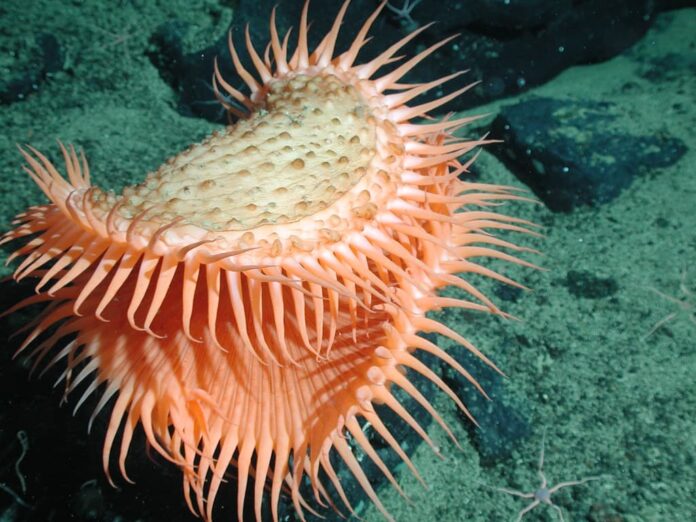
Does it look familiar? The Venus flytrap sea anemone looks exactly like the land carnivorous plant, the Venus flytrap. It has a stem-like body that ranges from pastel shades to white in color with an oral disk on top. Their resemblance does not stop there because their hunting habit is also the same. The sea anemone sits quietly and waits for food to drift into its outstretched tentacles equipped with nematocysts. When threatened, it can also close its oral disk before retracting into the stem part of its body. They live 1,500 meters deep in the water, possibly deeper.
Related Post: Weird-Looking Animals In Australia

